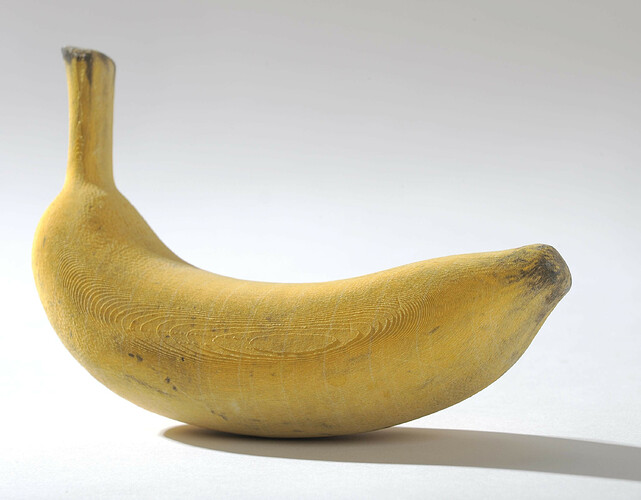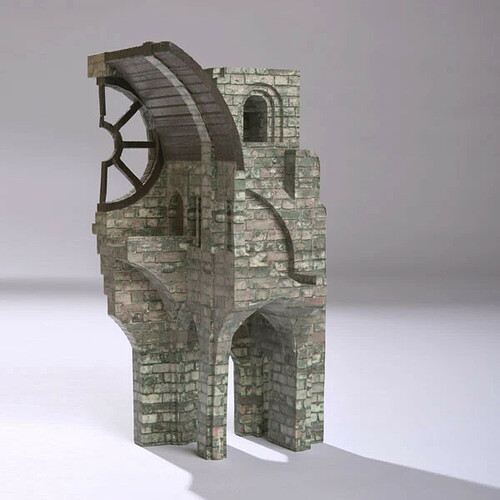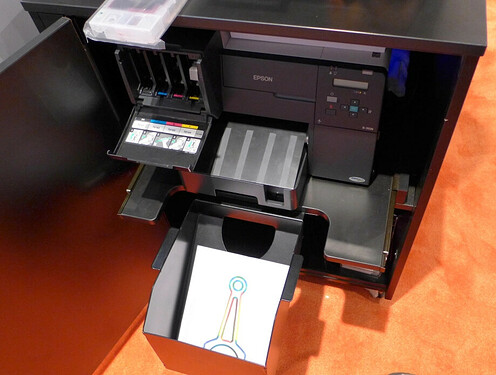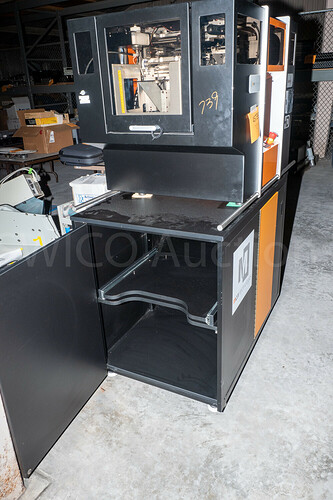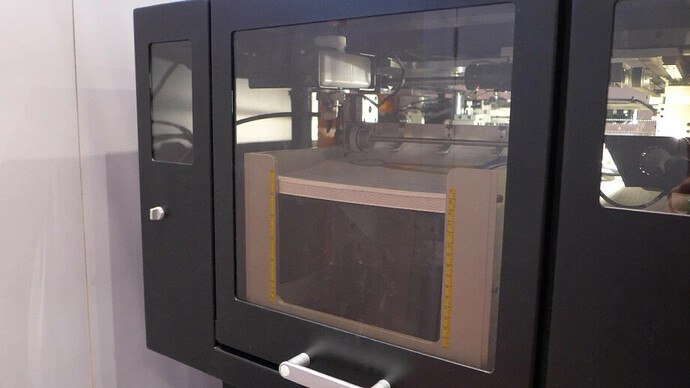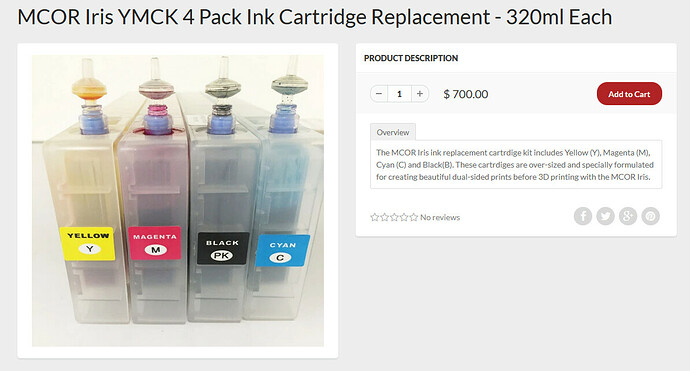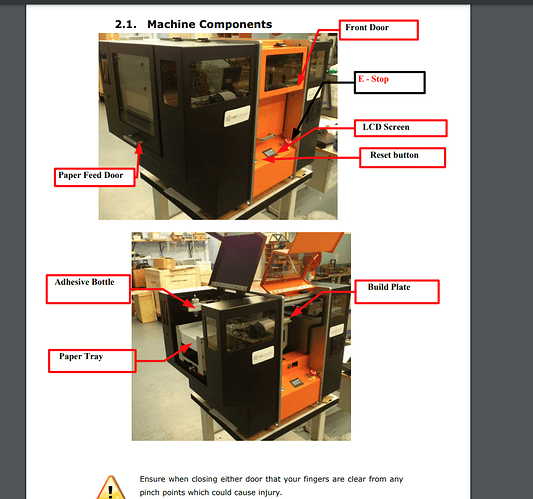Browsing SWICO Auctions and i noticed a pretty interesting 3D printer for sale, it’s an MCOR Iris 300A printer. It’s a full color 3D printer that uses paper and a regular inkjet printer to create colored parts. Here are some example prints. I’m not sure that it’s working or that we have a use for it, so I’m not suggesting we purchase it, but it’s something that’s cool and that I had never heard of, so I figured I’d make a post about it.
That’s interesting. Never heard of those either.
Another one I learned about recently that I had never heard of is UV printing. Saw someone selling UV printed stuff that looked really amazing. UV-Printing: What is it and how can you use it? - Sell Merch
I helped set up one of these at the UT makerspace! They are good for topographical maps.
@Keiarra This one is being sold from UT Surplus Property – perhaps it is the same one haha
It’s interesting the bid is still so low. Wish it said more about the condition.
If I’m reading it correctly, it sounds like this can be viewed during certain hours. @Keiarra any chance you would want to investigate this a little more and see if you can check it out in person since you’ve worked with this machine before? If it’s in working condition and something we can get for insanely cheap (looks like these are normally ~$40k), seems like something worth considering. I kinda can’t imagine it actually works at the price it’s at right now though.
FWIW, it looks like the company, Mcor, is now defunct and all of their IP was purchased by another company CleanGreen3D, who is selling their own rebranded copy of Mcor’s “Arke” printer. Its entirely possible that this printer is somehow software-locked, or just completely unsupported. That said, I feel like in parts alone the thing could be worth more than $125, but I’m not gonna go tearing the thing apart myself. Even if we did get it working, I’m still not too sure what it’s good for, besides curiosities and trinkets, but maybe I’m just being unimaginative.
@gordoa40 is right. At least as far as my research goes. The company before being defunct stopped support on this model and began focusing on their arke and arkepro models.
here is an excerpt from 3dbeginners.com:
"Although the color spectrum is baffling, the quality of the finished products is defined by an evident lack of detail in terms of texture on the models. In most cases, there is a distinct absence of features beyond general shapes and surfaces are flat, dull even.
The quality of the color rendering leaves something to be desired too with a slightly blurred, drab quality that is at odds with the vibrancy of plastic 3D printing, albeit in the few colors additive printing can produce. Layers are incredibly apparent throughout most models which can significantly affect the appearance of the coloring.
For the reasons above, the Mcor IRIS doesn’t stack up to the functional results of standard 3D printers where prints can be used as pre-production stress test models or serious prototyping. In our estimation, the Mcor IRIS is far better suited to artistic pursuits for sculptures, display models, ornaments and as parts of a larger art piece.
Alternatively, architectural firms will find the IRIS a suitable device to print 3D mock-ups of potential buildings, but as above the lack of detail means they won’t be suited to life-like renditions. The paper is quite simply not robust enough to weather the demands of a mechanical setting, pre-build testing, or as a pre-molding prototype.
Support
Mcor has seized production of the IRIS in favor of the newer ARKE and ARKEPRO, as such technical support for the IRIS is limited. The company’s website offers very little in terms of articles or tutorials and finding any support help is an arduous task in itself."
and
“Beyond artistic and educational purposes, the IRIS doesn’t provide enough detail and solidity for industrial-grade uses making it a rather expensive gimmick for any serious R&D department or design studio.”
It’s not completely cut loose:
Through a partnership agreement, Formicum 3D-Service GmbH will continue the support for the legacy Mcor Matrix 300/ and Mcor Iris 3D Printers. Formicum will hold stock of all available spare parts and consumables. We are excited to be working with Formicum, their knowledge and experience of the technology make them the ideal support partner. Founded in 2013 Formicum was an early adopter of paper-based 3D printing.
Please contact Formicum at info@formicum.de or through their website www.formicum.de regarding all Mcor Matrix 300 and Mcor Iris, support, spare part and consumable enquires.
Regards
The CleanGreen3D Team.
Additionally, ClearGreen3D is still hosting documentation at http://legacysupport.cleangreen3d.com/support/home
It’s definitely on deathwatch, but doesn’t want to go on the cart just yet. Hell, Formicum is still selling them refurbished:
Several Mcor IRIS WITHOUT a base cabinet are for sale.
The devices are overhauled, tested and cleaned.
We give a 12 month warranty.
A4 or US letter size devices are available
Price from 20,000 € net
Hmm, it’s odd that it isn’t listed on their website with pricing. I’ve always been told that if you have to ask then you probably can’t afford it. So it would be a very important piece of information if we were able to find out what the parts and consumables cost.
But as @buzzmeg has cleaned out the electronics lab with things that were basically not feasible to have lying around collecting dust, I personally don’t see the value in acquiring a machine like this. Only because the majority of the people that come through the 3D printing class express wanting to create items that are functional as opposed to ones simply for decoration or artistic purposes.
Not to mention where would we place such a large item in the space that is currently allotted for 3d Printers. The only place feasible would be where the old server rack is currently at.
For $200 I’m really tempted to just go for it to find out, but I can’t imagine the consumables could possibly be cheaper than the large-format printers that we don’t buy consumables for because they’re too expensive.
We could ask people to bring their own paper and glue (if we can source it retail) but I bet it eats printheads like candy.
Full-color aesthetic 3D printing would definitely be an interesting and unique capability if we could keep the machine supplied. It might expand 3D printing area to new audiences. When we got a color Zprinter at school, it was for the most part used by a totally different audience than the more industrial SLA & SLS machines.
I don’t doubt that it’d be an expensive gimmick for a serious design studio, but we’re not a serious design studio and UT surplus is practically giving it away 
From what I understand for these machines (The Iris, as opposed to their Arke models), the paper used is either A4 or US Letter, depending on which it’s spec’d for. So I think you just use regular old reams. The glue, however, may be proprietary. Also not sure about ink and printheads, like you said, but I saw pics that made it look like a regular epson printer outfitted with special ink that was less viscous or something and was allowed to saturate the paper more freely as opposed to staying on the surface.
For the arke model, it used rolls of paper that they provide for consistency.
Yes the glue is purchased from them as well as the ink which is meant to soak the paper. As for paper @gordoa40 is right it uses reams of A4 or Letter size.
More information is present in this tested article
Y’know…just from that one image it kiiiinda makes me think that the printer is housed in the bottom and it is suspiciously absent from the pictures on Swico… could this be the reason its so cheap? Or is it housed somewhere up above and the cabinet is truly just for storage?
Eh, no, I think that’s whats happening here. Pretty sure the printer is missing. Now whether or not thats a huge problem, I’m not quite sure. The actual process of printing I believe starts with printing all the pages, then loading them into the top part for it to slice and glue them – perhaps this can be accomplished on a separate printer? Except then it wont have the special saturating ink.
The bottom cabinet is merely just a cabinet. The printer, if it has one in it, is combined in the top portion of the device. As it prints the image on the paper it then applies adhesive, puts the next piece of paper on the top and uses its heat plate to mash them together. then the blade cuts the print in the new top layer.
I agree it’s just a cabinet, but I think it’s where the printer is usually housed.
In that article I posted it says:
Regular 20 – 40 lbs paper is run through a modified Epson printer using ink that Mcor developed. A laser printer or regular inkjet can’t be used since toner and standard ink does not penetrate the page–which would create thin white bands in the finished model. Mcor had to design an ink that would do the opposite of what you normally want, and soak through the page so the colors are saturated. The printer uses really large ink cartridges, which you can see sitting on the print table in the above photo. The print will also have a certain amount of bleed to allow leeway for cutting.
Each page is barcoded to mark its place in the queue and if any sheets are found to be missing or out of order, the printer will pause to allow you to fix it. There are also alignment marks which are read to ensure each layer lines up properly. Once all the pages are printed they are stacked in the feeder to prep for printing.
That, in addition to the image i posted above makes me think that the printer is not in the top portion. You can see the u-shaped cutout in the shelf similar to the image below from Swico.
You can see the paper hopper here, too:
I could be totally wrong, its hard to piece together from the oddly limited amount of info available on this thing. But definitely worth investigating before thinking about purchasing.
I sent the company an email at the address @Jon listed further up to obtain a price list for the replacement parts and consumables for this specific printer.
Given the explanation of how their ink works (it’s thin and soaky) maybe the heads last longer than I feared.
We’re not really set up for charge-by-the-hour machines, but I’d support somebody looking into it in more detail.
